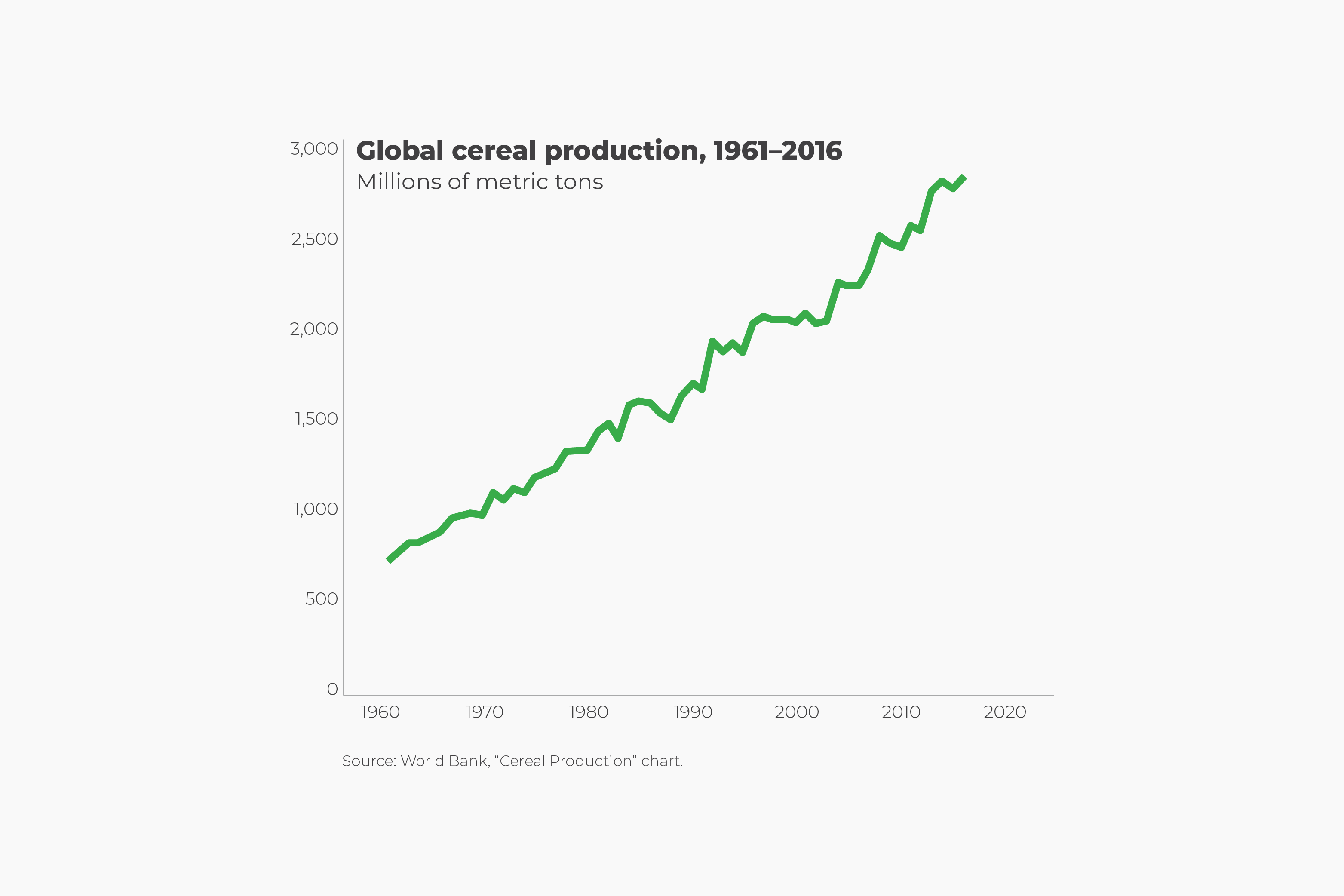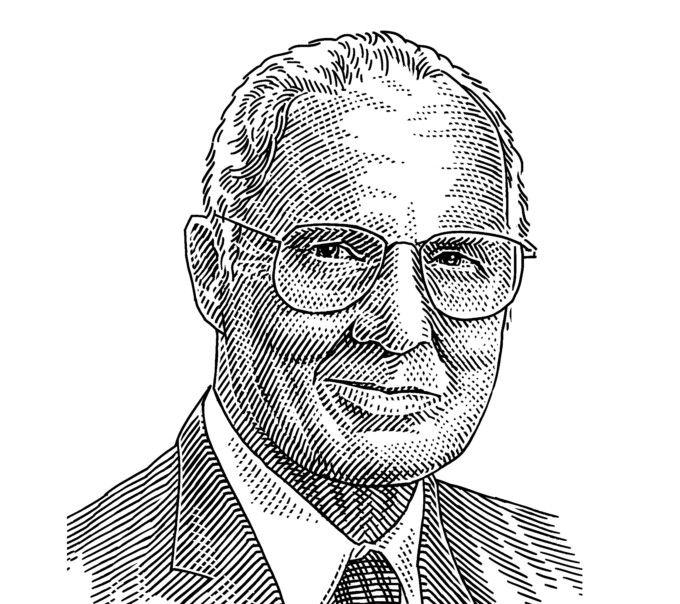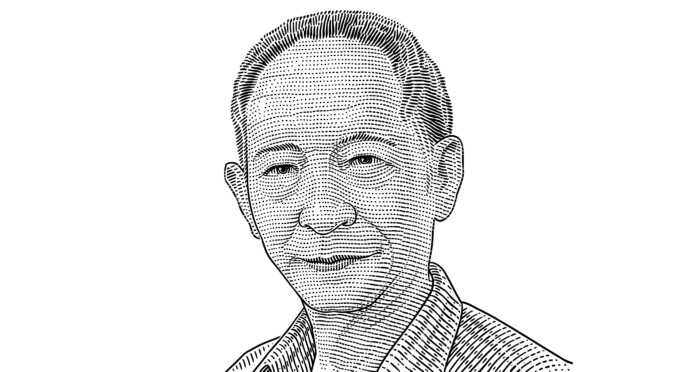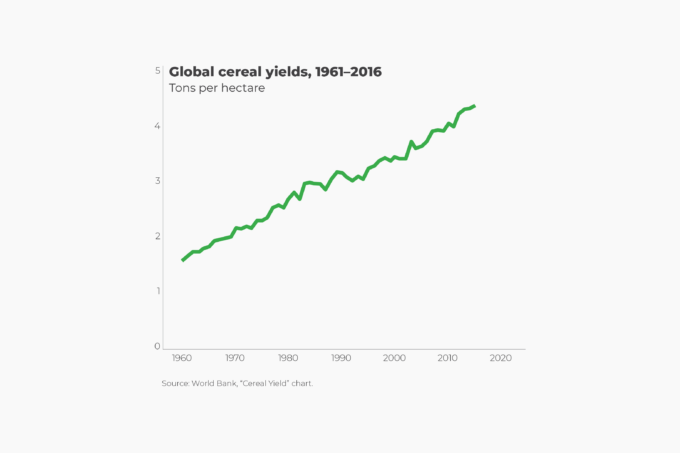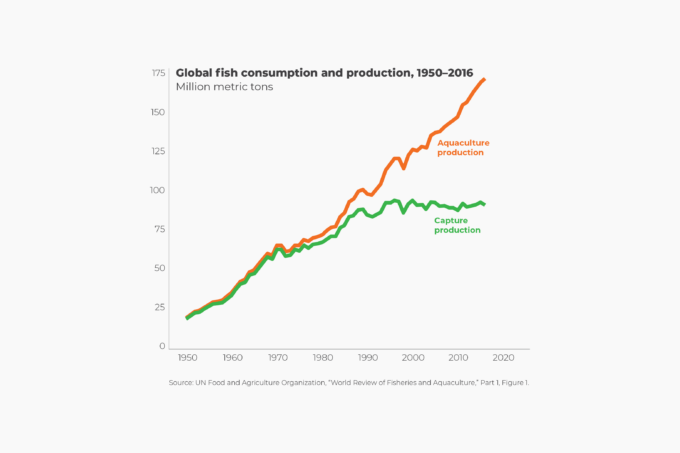More than 50 percent of humanity’s daily caloric intake comes directly from cereal grain consumption. Rice contributes about 21 percent of the world’s per capita caloric intake. Wheat is a close second, directly providing about 20 percent of world per capita calories. About one-third of cereal grain production (particularly corn, barley, sorghum, and oats) also goes into livestock feed, thus indirectly contributing to human nutrition. After rice and wheat, potatoes are the third- most-important food crop in the world; current global production of potatoes is about 380 million metric tons grown on about 19 million hectares (47 million acres).
In 1961, the world’s farmers harvested 735 million metric tons of grains, providing an average of 247 kilograms (545 pounds) for each of the globe’s 3 billion people. By 2017, world grain production had nearly quadrupled to 2.98 billion metric tons, affording an average of 380 kilograms (838 pounds) for each of the world’s 7.5 billion peopletoday. This massive increase in grain production took place even though the amount of land used to cultivate food crops only rose from 1.38 billion hectares (3.4 billion acres) in 1961 to 1.59 billion hectares (3.9 billion acres) in 2016.
What about the future? Since the 1960s, the annual world population growth rate has decelerated, dropping from 2.1 percent to about 1 percent now, and it is expected to fall further to 0.5 percent by 2050. Meanwhile, the UN Food and Agriculture Organization expects crop yields to increase at about 1.4 percent per year through 2050. The upshot is that the food supply will increase faster than will the population, thereby increasing global food security.

